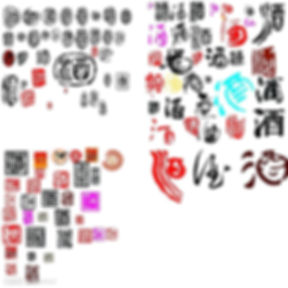Muga Prado Enea Gran Reserva 2010.

Deep ruby. Shiny and bright. Medium depth. On the nose, ripe black and red fruit notes(cherries, for example), subtle cedar, sweet tobacco, spices, vanilla, cinnamon, dark chocolate, autumn leaves, ripping into a Christmas pudding cake with rock mineral through red & purple flowers bathed in thick balsamic sauce & a hint of earthy herbs. Med bodied. It has a creamy body of balsamic infused mocha dark cherry in a mineral dry ton with layers. It is fresh and with balanced acidity. The tannin is ripe, polished, and becoming delicious, elegant now with room for even more improvement. Long fruit. Full decanting suggested. Patience will be rewarded.

This wine is the top-top wine at Muga. 2010 is one of the excellent vintages. We have been loving this wine since 1997, our first sips of a vertical tasting with HKWS in Restaurant Petrus, Admiralty.
On the making and growing. The grapes are always fermented in 10,000-kilo capacity oak vats without temperature control and no addition of yeasts. The maceration period varies but can continue for as long as twenty days. The wine spends six months in the vat, aged for 12 months in 16,000-litre oak vats, thirty-six months (minimum) in oak casks and thirty-six months (minimum) in the bottle. After ageing, it is lightly fined using fresh egg whites. Hence, we don't feel an undue oak on the palate. May age for another 5 to 10 years probably.

Some geography. Terraced plantings on the clay and alluvial soils at the foot of the Obarenes mountains at the Western edge of Rioja Alta form the basis for Prado Enea Gran Reserva. The vines are from Sajazarra, which is a village amongst the coldest growing regions of Rioja Alta further west from Haro and with harvest dates that typically extend well into October, even into November!!! Classic composition of 80% Tempranillo, 20% Garnacha and approximately 10% Mazuelo and Graciano are blended in. This creates freshness as the latter two are higher acid grapes, which tends to result in fresh, low pH wines that age for long periods of time. Finally, in the cellar, there are various types and formats of wood vessels, from huge "tinas" (meaning vats) to smaller new barrels, which are employed through experienced, time-tested elevage to provide the wine ample opportunity to develop its stability and complexity. If this wine is a gem in most vintages, in years as strong as 2010 it indeed is a must have bottling for the cellar. ( The geography source: Muga sites and KL wines).

Awarding it JS99, James Suckling says this wine is exceptional with 'flawless and seamless nature', which 'takes your breath away' and indict that it will 'drink now and forever'.
This is a RP97. Robert Parker's Wine Advocate writes '2010 is one of the more-balanced vintages of recent times, and 'gives a nose of youth', and 'shows in the unbelievable elegance and harmony on the palate', where the tannins are lovely, the flavours subtle, thick, and the length phenomenal.

Another high score is D96 from Decanter who says that ' (sic) No Muga probably gets any better than 2010 – this is a brooding, age-worthy blend of mostly Tempranillo.
A JD95, Jeb Dunnuck is of the opinion that ' it’s a rocking, feral, wild bottle of wine that offers tons of smoky black fruits, graphite, crushed rock, and coffee bean-like aromas and flavours. Deep, rich, full-bodied, backward, and closed on the palate, it has a great mid-palate, terrific purity of fruit, and a great finish. It is a WS94 on which Wine Spectator says it's generous, focused... harmonious and graceful.'
Awarding this wine a score of 94, and Wine Enthusiast says it darkens up and tastes more savoury on the finish.'






















